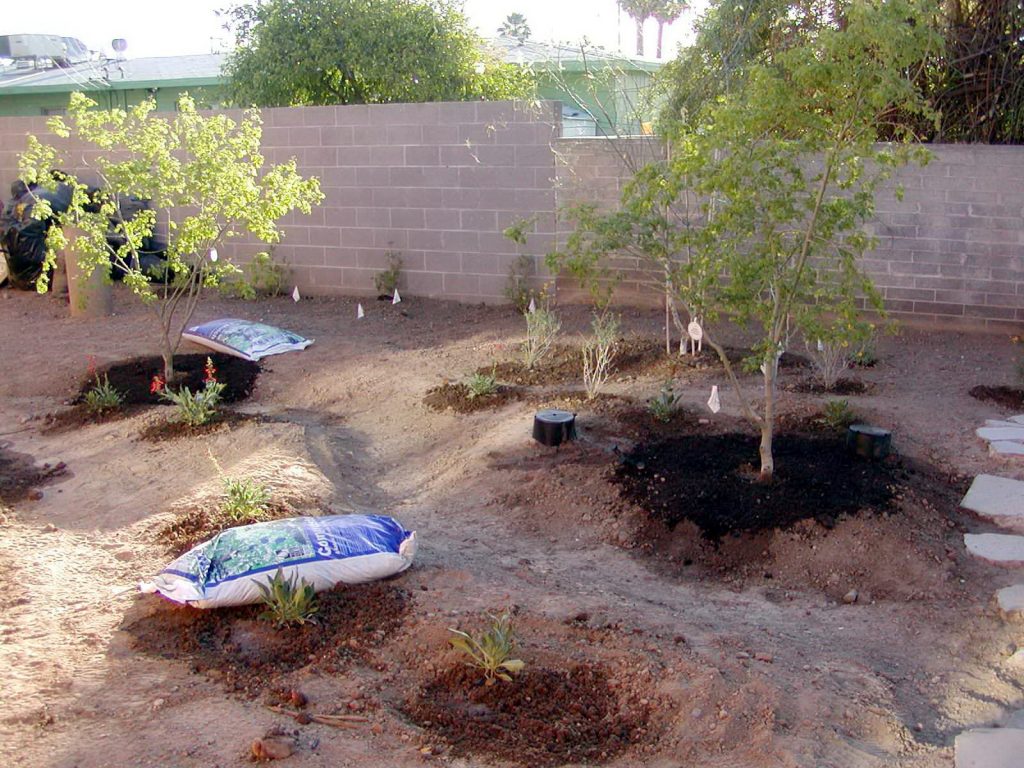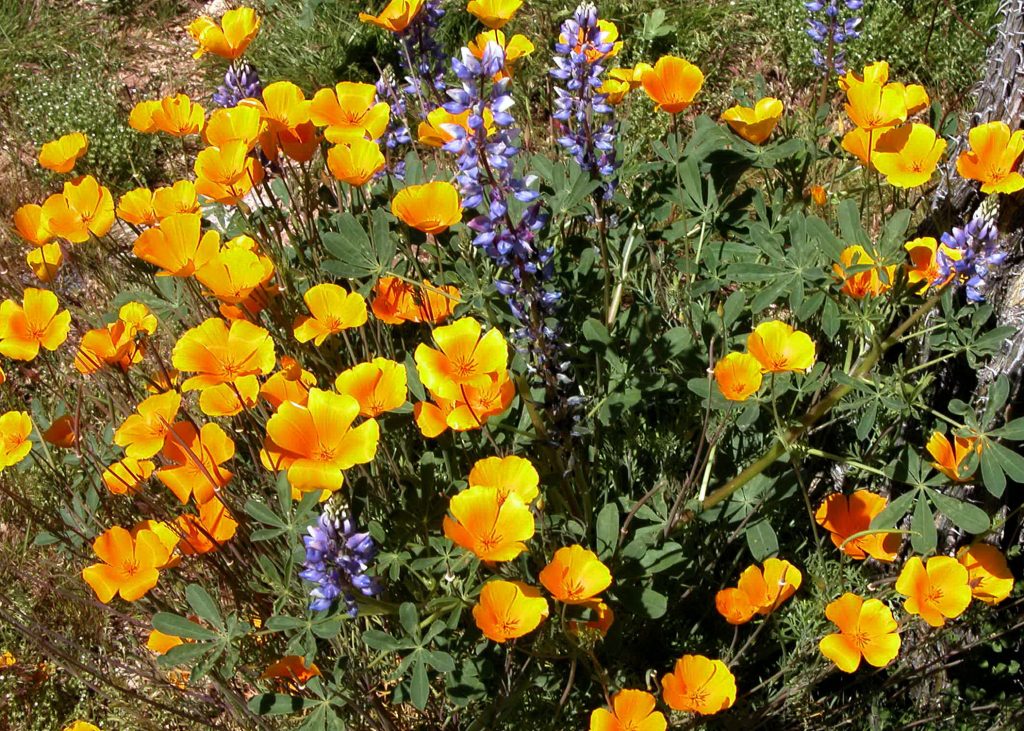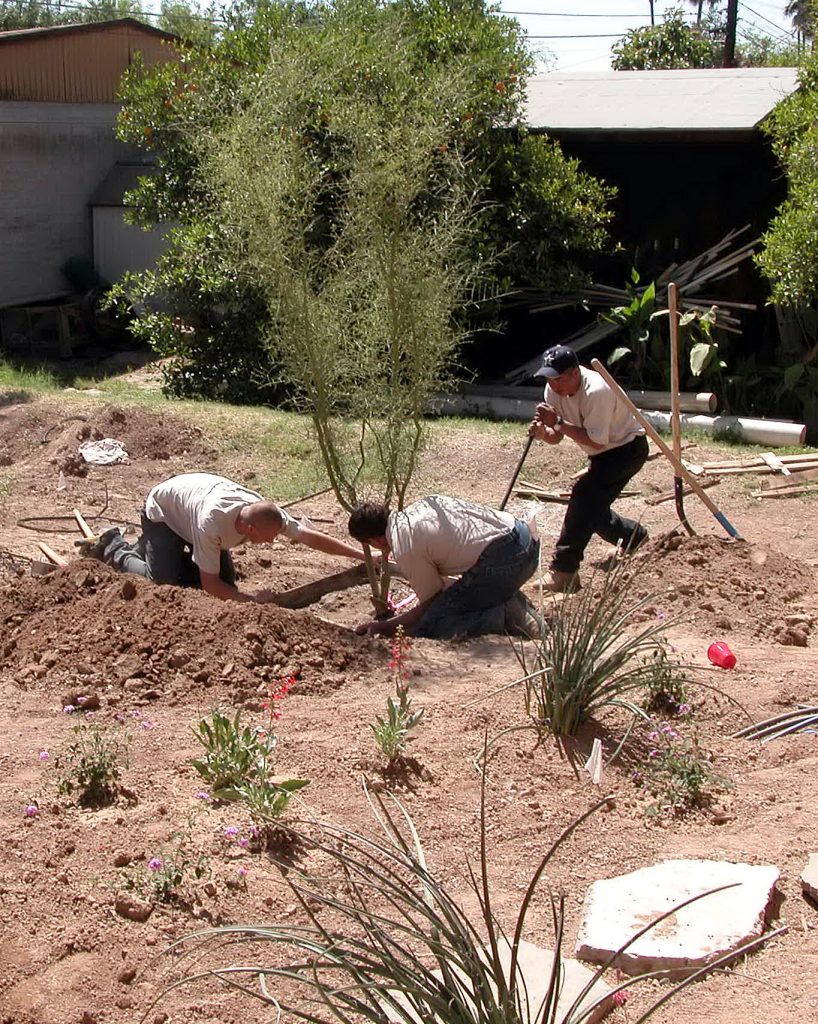Donna DiFrancesco is a Conservation Coordinator with the City of Mesa, AZ, one of 20 Water– Use It Wisely partners to offer water-saving advice and programs.
The fall planting season has arrived! Temperatures are cooler, and it’s a great time to replace plants you may have lost during the hot summer.
Why is fall planting so good for plants? Soil temperatures are still warm, encouraging root growth and development and allowing plants to get much better established before next summer’s heat sets in. Also, with cooler temperatures, plants need less water and it is a much more forgiving time of year to put new plants in the ground. Forget to water just one day in the summer, and your new plants can be toast. From the fall season through spring, water newly planted plants once every 3-4 days and gradually increase the number of days between watering as plants get established.
Always plan before you plant!
Whether you are planting a single plant or an entire landscape, look at mature plant size and characteristics to make sure they will fit into the space you have available and to be sure they will perform the function you are looking for. Good planning is a worthwhile investment of time that will pay off with a more attractive, easy to maintain, and functional home landscape. Water – Use It Wisely Arizona partners have put together great information on local planting, called Plant Now for the Future that includes planting instructions, plant placement and other design ideas. Also be sure to explore the event calendar on the Water – Use It Wisely home page and find out about all of the fall landscape workshops going on in the Valley.

There are exceptions to fall planting. All bare root plants, including roses, pecan, and fruit trees are generally planted in late December or January when they are dormant. Palm trees and other tropical plants will do best if planted during the spring or summer. When you purchase plants for your home landscape, be sure to look for healthy, well-grown plants. Don’t forget to add 2-3 inches of compost or mulch to the surface of the soil after planting and before covering with granite or rock (keep the mulch a few inches away from the stem or tree trunk). Check with your local plant nursery for best results, but don’t forget local plant sales put on by botanical gardens or others. Here’s a list of upcoming fall plant sales:
- Boyce Thompson Arboretum: Oct. 13-30, 8 a.m. to 5 p.m. Members only on Oct. 13.
- Desert Botanical Garden: Oct. 20-22, 7 a.m. to 5 p.m. & 9 a.m. to 3 p.m. Members only on Oct. 20.
- Fall Plant Sale by UofA Master Gardeners: Oct. 28 at Metro Tech High School, 8 a.m. to 1 p.m.
- Arizona Rare Fruit Growers: Nov. 4, 8 a.m. to Noon at Mesa Community College.
- Local Nurseries – Your local nursery will often have fall promotions. Find your closest local nursery by visiting the Arizona Nursery Association’s Plant Something website.

Don’t forget to plant seeds!
It’s also the time of year to plant seeds. Are you thinking of overseeding your bermudagrass? First, see the Top Ten Reasons Not to Overseed with Winter Rye. If you decide you still want to overseed, keep it as efficient as you can with the timing and watering and limiting the areas.
Are you looking for carpets of golden poppies or spikes of violet lupines? Fall is the time to sow many of the wildflower seeds in your landscape. If possible try to sow shortly before one of our October or November rains. For good details on wildflower gardening, request our free booklet, “Landscape Plants for the Arizona Desert” or read our blog, “Plant of the Month: Wildflowers!” for more information.
Wild Seed, Inc., is one of our best local wildflower seed companies. Look for the seed at plant sales or your local nursery, or contact them at 602-276-3536.


